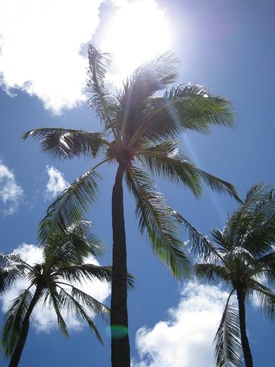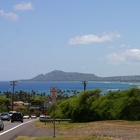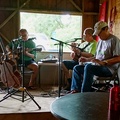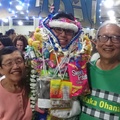This essay is the second half of a 12-part series. The first six parts have focused on the cultural aspects of Japanese people in Hawaii, and have been considered in comparison with Japanese culture and Japanese culture. In particular, following the advice of Ms. M, who is like a guardian to me in Hawaii, I have tried to pay attention to the diversity of Japanese people in Hawaii and avoid over-generalization. When in doubt, I sometimes go to Hawaii on top of my regular annual stays.
In this second half of the series, I would like to reconsider the "diversification of Japanese people" that I wrote about at the beginning of "Part 2: Is dressing fashionable not fashionable?" Furthermore, I would like to confirm whether this is the reason why Japanese people in Hawaii are becoming individualistic.
It has been said that Japanese people often get together and act together when they go abroad. Package tours are a typical example of this, and it was said that many Japanese people cannot do anything alone abroad. Whether they get together or act alone was often judged as a barometer of whether they were used to traveling and whether they were able to adapt to the local environment.
However, not only Japanese people but all humans tend to find similarities in others and gather together. In Japan, for example at the university where I work, I often see international students from the same or nearby countries forming groups.
Why are Japanese Americans said to be individualistic?
While I was being taught how to swing a golf club in front of the garage of Mr. M and Mr. L's house, Mr. M muttered, "Japanese people can't live together." I didn't quite understand what he meant by "live together," so I asked him what he meant specifically.
M doesn't particularly want to force himself to live with his relatives or live in the same neighborhood. It doesn't seem to be a personal wish. In the past, Japanese people in Hawaii often lived in clusters in certain areas, just like today's Hawaiians, Filipinos, Chinese and Koreans. Of course, there are differences among the latter in family size and the shape and size of houses, and the degree of concentration also varies. However, compared to Japanese people, the relationships between family members are closer, and they see each other almost every day, says M.
Well-known areas with many Hawaiians are Waimanalo in the east, and Nanakuli and Waianae in the west. Furthermore, Kapolei, next to Nanakuli, has recently undergone large-scale urban development, and the Hawaiian population is also increasing in this area. Each of these areas has Hawaiian homesteads that were sold preferentially to Hawaiians, and such affirmative action policies are also a factor in their concentration.
When you think of Kalihi and Waipahu, the reddish-brown color of the soil and the image of a district where many Filipinos live naturally overlap. With the decline of the sugar industry in Waipahu, Japanese people left the town and scattered all over the island, and the Filipino population increased further. If you visit the town during election season, you can see banners of Filipino candidates hanging on the walls of houses everywhere. In Kalihi, too, people are enthusiastically supporting candidates of the same ethnicity.
There is a great Chinatown in the east area of Kalihi. It is very lively from early morning until noon. Even in Hawaii, I am a night owl and a late riser, so I rarely go to Chinatown in the early morning, but I pass by it almost every day when I drive back from work in the evening or at night. Chinese merchants are packing up their belongings and preparing for the next day.
Eating raw eggs on rice is popular in Hawaii, but in the past, fresh eggs that could be eaten raw had to be purchased at farms in Kahuku on the other side of Oahu. Now, you can buy fresh raw eggs in the area north of Ala Moana Shopping Center, where Korean stores are on the rise.
Thus, while there are many ethnic groups that can be said to have a large number of people of a certain ethnicity in certain areas, it is not so easy to say in which areas Japanese people are concentrated. In the past, maps showing the "segregation" of ethnic groups were sold, and were kept in the library and classrooms of the elementary school where I have been making long-term observations, but they seem to have become so old that they were disposed of. There is no word of a new edition being released since then. I think it has become difficult to create maps because interracial and interethnic marriages have become commonplace and intermarriage is increasing, and because Japanese people, who still make up the majority in terms of numbers, are no longer congregating in large numbers.
So why did Japanese Americans become "individualistic"? In the second part of this essay, I wrote, "The big-name second generation who had been a unifying force in Japanese American society, such as Daniel Inouye and George Ariyoshi, stepped down from the front line, and the center of the era was gradually handed over to the third generation. (Omitted) Due to various circumstances, the generations of Japanese Americans after the third generation became more diverse." When people become more diverse, groups become more fragmented. While loose ties remain, they feel a sense of identity in the commonality of the lower level, and are strongly bound together. But is that the only factor?
Will improved social status lead to less concentration ?
Chinese people have formed Chinatowns all over the world. As I wrote earlier, Honolulu's Chinatown is also lively. I've heard that it's not as lively as it used to be, but it's still very Chinese. Both M and L, who are experts in cuisine, say that there are many things that can only be found here.
The Chinese immigrants left the sugar plantations earlier than the Japanese immigrants who came to Hawaii later, and started living in towns and doing business. This meant that they went from being plantation workers to having their own jobs. And they went on to support the Hawaiian economy.
From just this one case, it does not seem possible to conclude that "people will stop living in large groups as their social status improves."
In Chinatown you can hear various dialects of Chinese, in Koreatown you can hear Korean, and Filipinos speak Tagalog. Everyone lives and works in their native language.
The issue of language, especially the mother tongue, is very important and is said to have a strong influence on the formation of identity. "Many Sansei attended Japanese language schools, but due to the wartime internment and hostile policies against Japanese people, many families did not allow their children to learn Japanese as a sign of loyalty to America." ( "Is it fashionable to dress fashionably, or not?" Part 2 ) As a result, the Sansei became linguistically diverse, from those who were fluent in Japanese to those who could neither hear nor speak it. And many Yonsei do not use Japanese in their daily lives. I have not met any Yonsei who can speak Japanese fluently. I think that this "linguistic assimilation (into English)" is a major factor in the "diversification, fragmentation, and dispersion" of Japanese people in Hawaii. Japantowns have already disappeared from Hawaii, and there are only a few left in North America.
Part 7 (Part 2) >>
© 2016 Seiji Kawasaki







